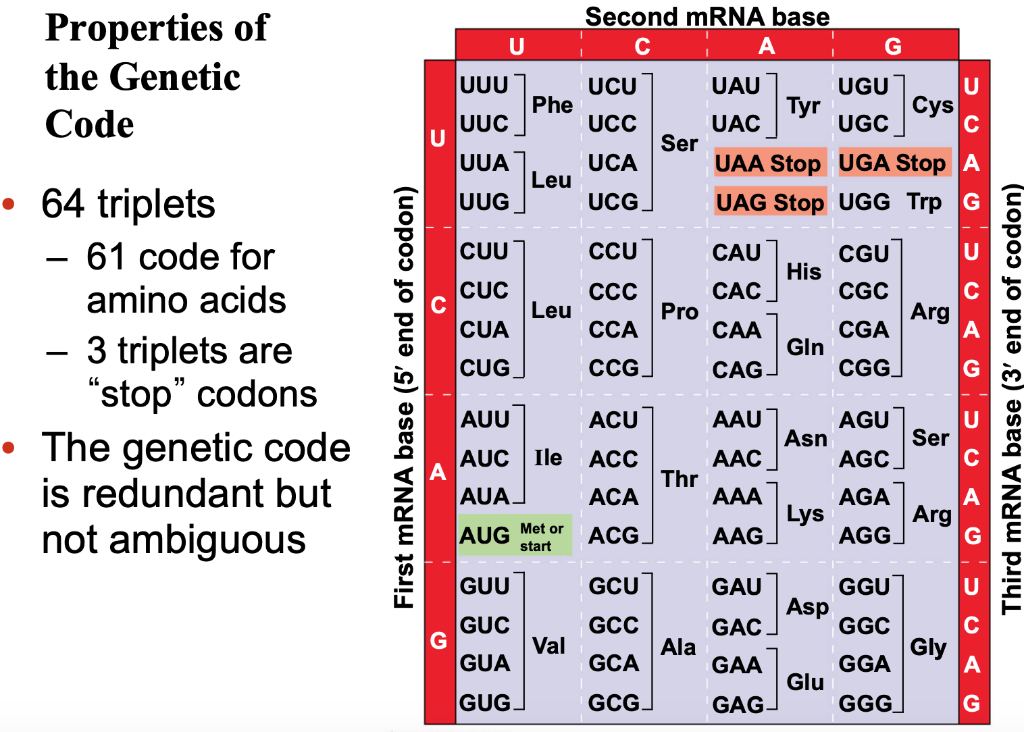

Each nucleotide consists of three subunits: a phosphate group and a sugar ( ribose in the case of RNA, deoxyribose in DNA) make up the backbone of the nucleic acid strand, and attached to the sugar is one of a set of nucleobases. Nucleic acids consist of a chain of linked units called nucleotides. Each codon consists of three nucleotides, usually representing a single amino acid.
#Amino acid sequence from mrna series
Nucleotides Chemical structure of RNA A series of codons in part of a mRNA molecule. However there is no parallel concept of secondary or tertiary sequence. Primary structure is sometimes mistakenly referred to as "primary sequence". Nucleic acids also have a secondary structure and tertiary structure. Biological deoxyribonucleic acid represents the information which directs the functions of an organism. The sequence represents biological information.

For this reason, the nucleic acid sequence is also termed the primary structure. Because nucleic acids are normally linear (unbranched) polymers, specifying the sequence is equivalent to defining the covalent structure of the entire molecule. For DNA, with its double helix, there are two possible directions for the notated sequence of these two, the sense strand is used. By convention, sequences are usually presented from the 5' end to the 3' end. This succession is denoted by a series of a set of five different letters that indicate the order of the nucleotides. ( PDB: ADNA, 1BNA, 4OCB, 4R4V, 1YMO, 1EQZ)Ī nucleic acid sequence is a succession of bases within the nucleotides forming alleles within a DNA (using GACT) or RNA (GACU) molecule. The image above contains clickable links Interactive image of nucleic acid structure (primary, secondary, tertiary, and quaternary) using DNA helices and examples from the VS ribozyme and telomerase and nucleosome.

JSTOR ( March 2014) ( Learn how and when to remove this template message).

Unsourced material may be challenged and removed.įind sources: "Nucleic acid sequence" – news Please help improve this article by adding citations to reliable sources. The incorporation of a particular amino acid is done by every three nitrogen-containing bases in the mRNA within the protein during the process of translation.This article needs additional citations for verification. MRNA acts as an intermediate between DNA and protein and follows the central dogma which is the flow of genetic information from DNA to RNA and protein as the DNA cannot be decoded directly for the production of amino acids. The ribosome releases the polypeptide when the stop codon is reached and is known as a termination. The validation of tRNA by the small ribosomal subunit takes place during elongation which transfers the amino acid which carries the large ribosomal subunit that binds to one of the preceding tRNAs. Initiation involves the assembling of the ribosome around the target mRNA and the attachment of the first tRNA with the start codon. Translations take place in three faces which include initiation, elongation and termination. The induction of the binding of complementary tRNA anticodon is facilitated by the ribosomes which carry the specific amino acids that are changed together when the mRNA passes through and read by the ribosome. The mRNA is decoded outside the nucleus for the production of specific amino acid chains or the polypeptide chain which gets folded into an active protein that performs the function in the cell. The mRNA is decoded during the process of translation in which the ribosomes in the cytoplasm or the endoplasmic reticulum synthesizes the proteins in the cell's nucleus after the process of transcription of DNA to RNA. The process of converting the mRNA 'message' into a sequence of amino acids is known as translation. Messenger RNA transfers genetic information from DNA to the cytoplasm and is single-stranded. Hint: mRNA stands for messenger RNA which carries a coding sequence for protein synthesis.


 0 kommentar(er)
0 kommentar(er)
